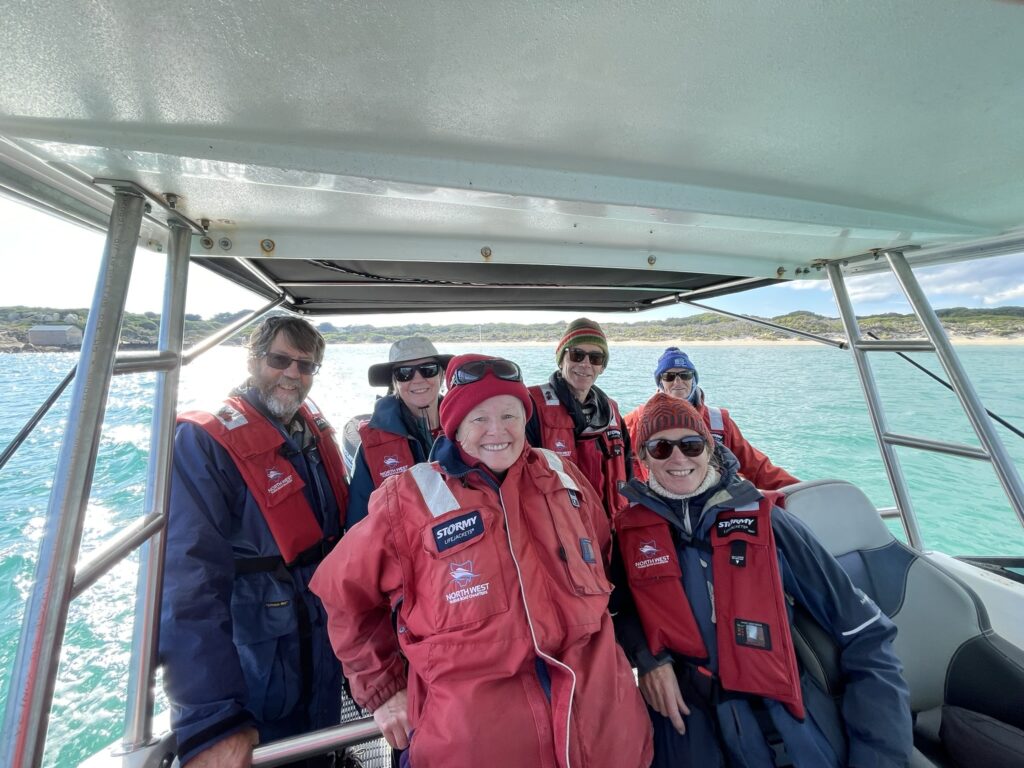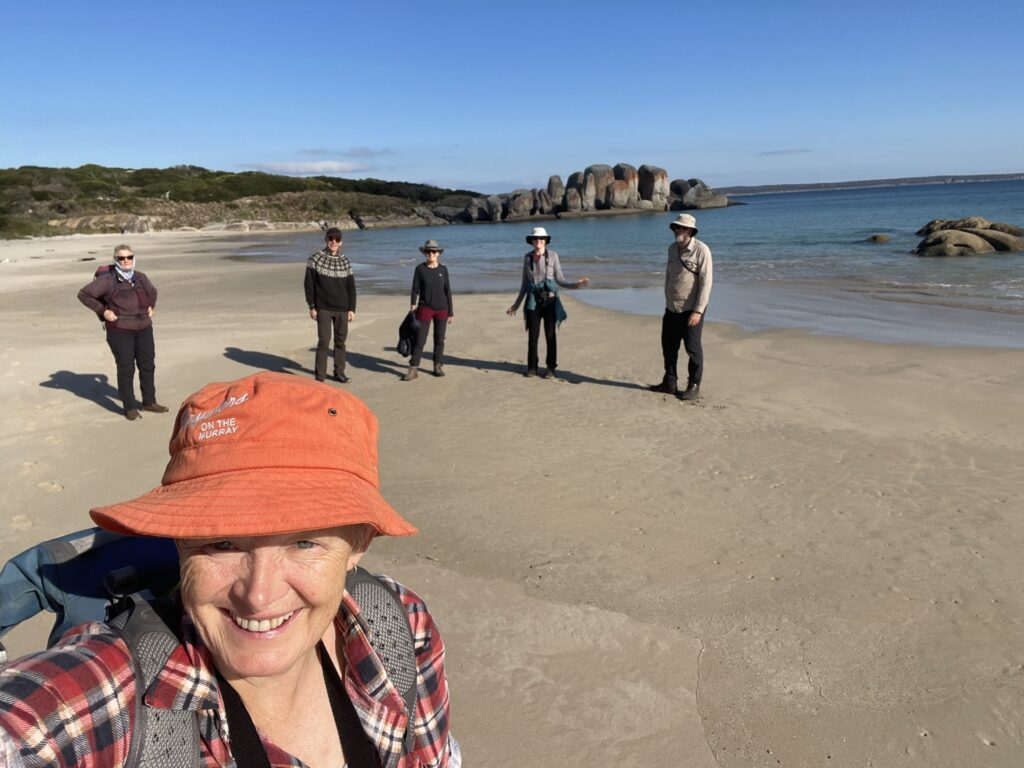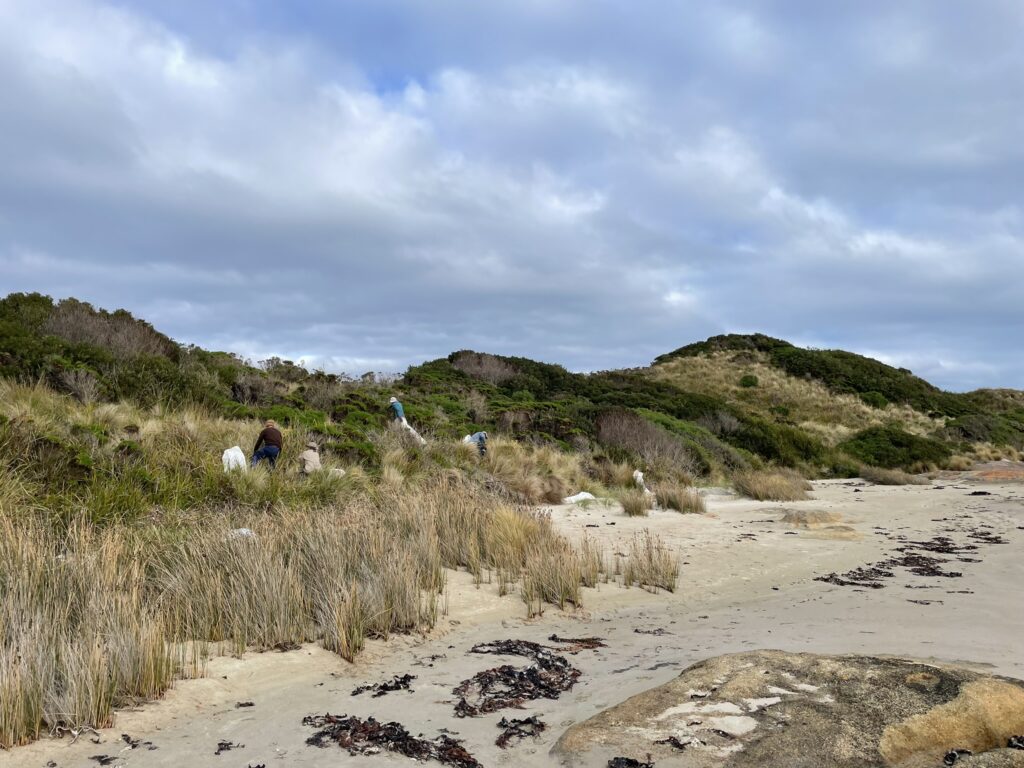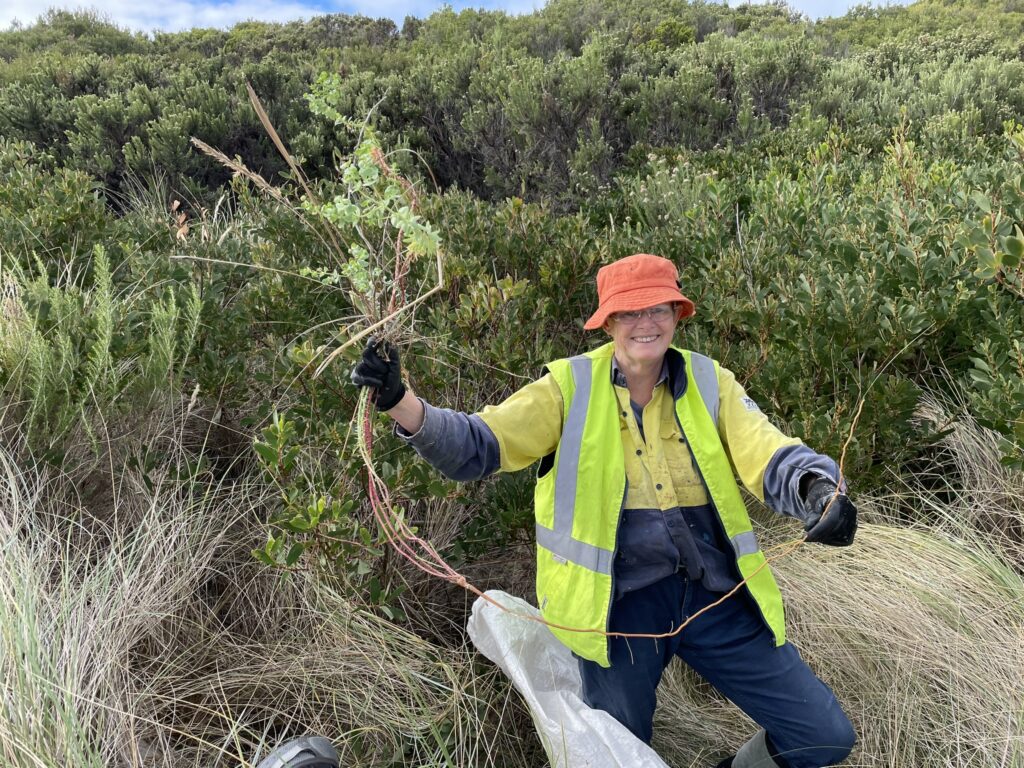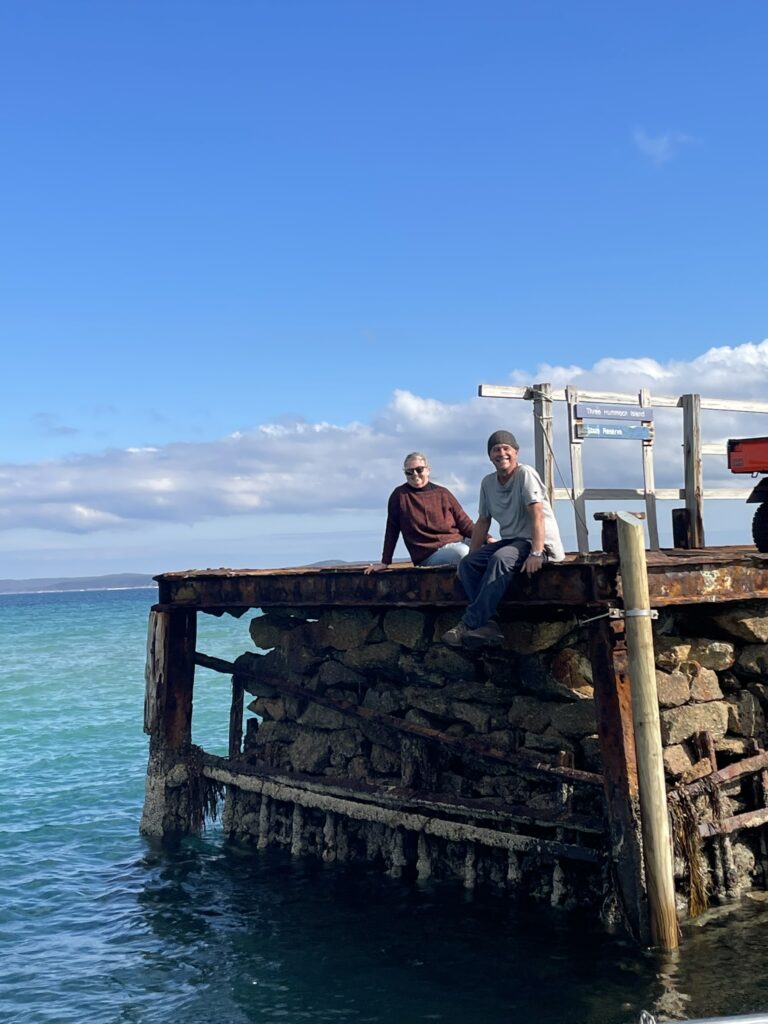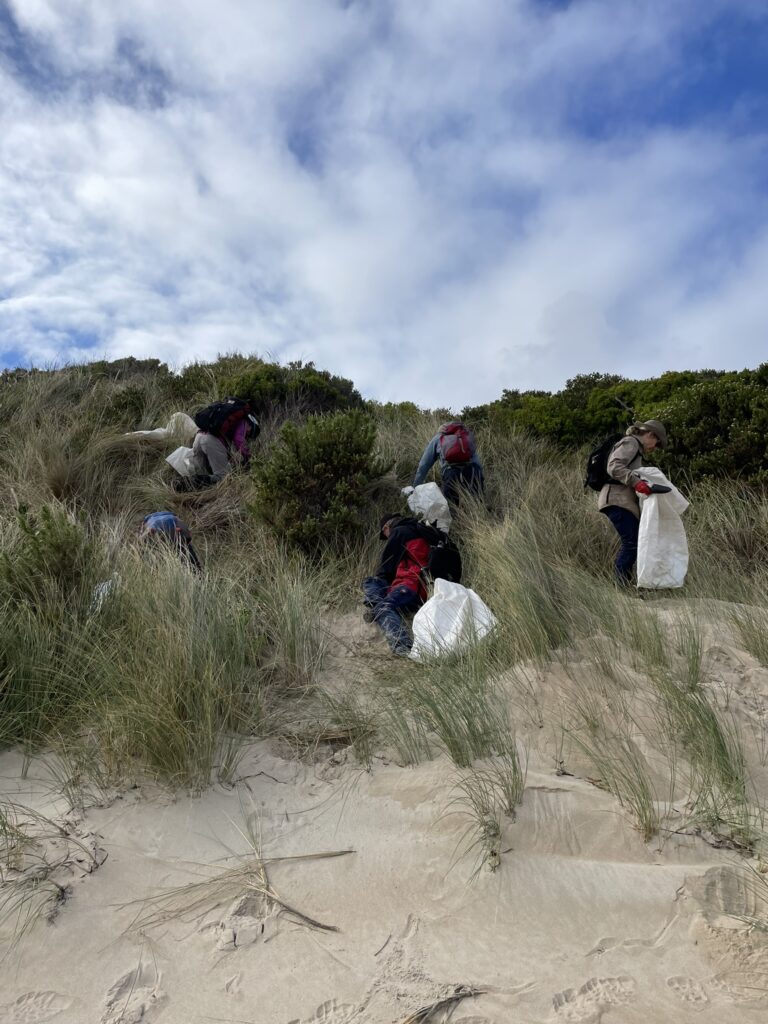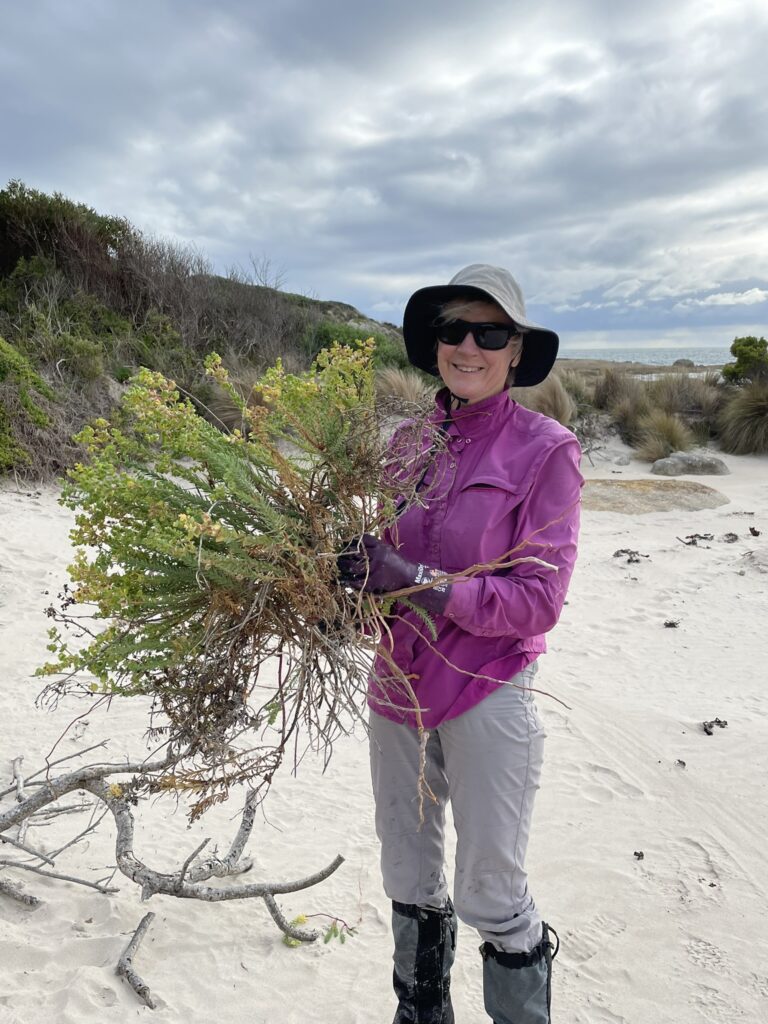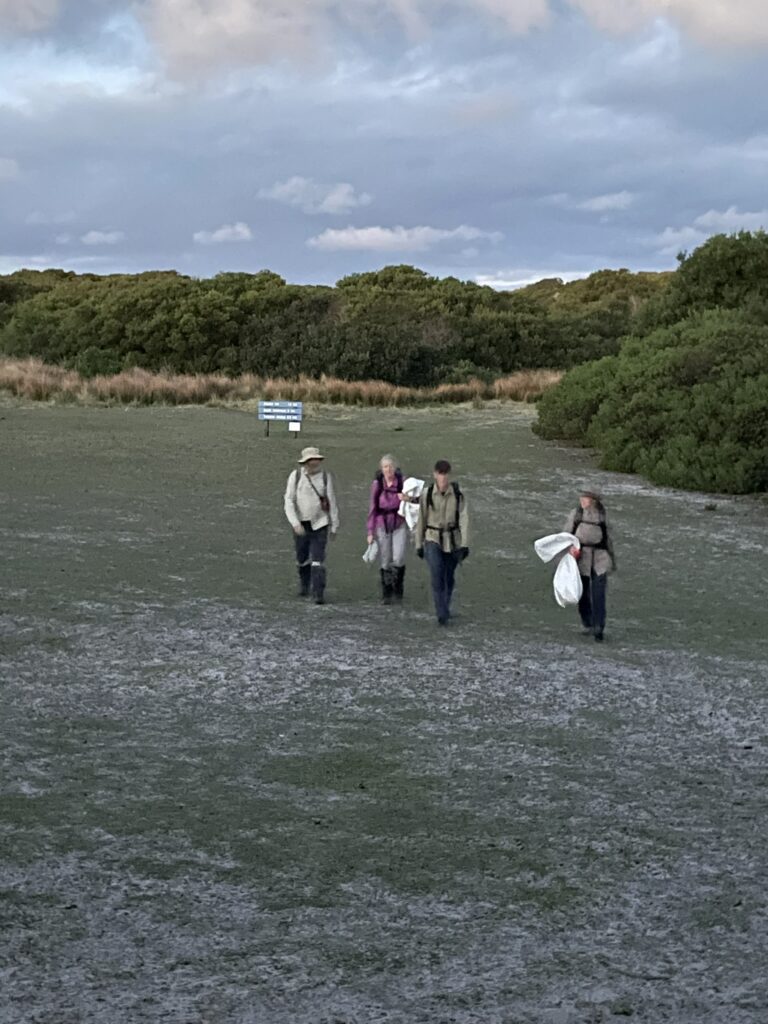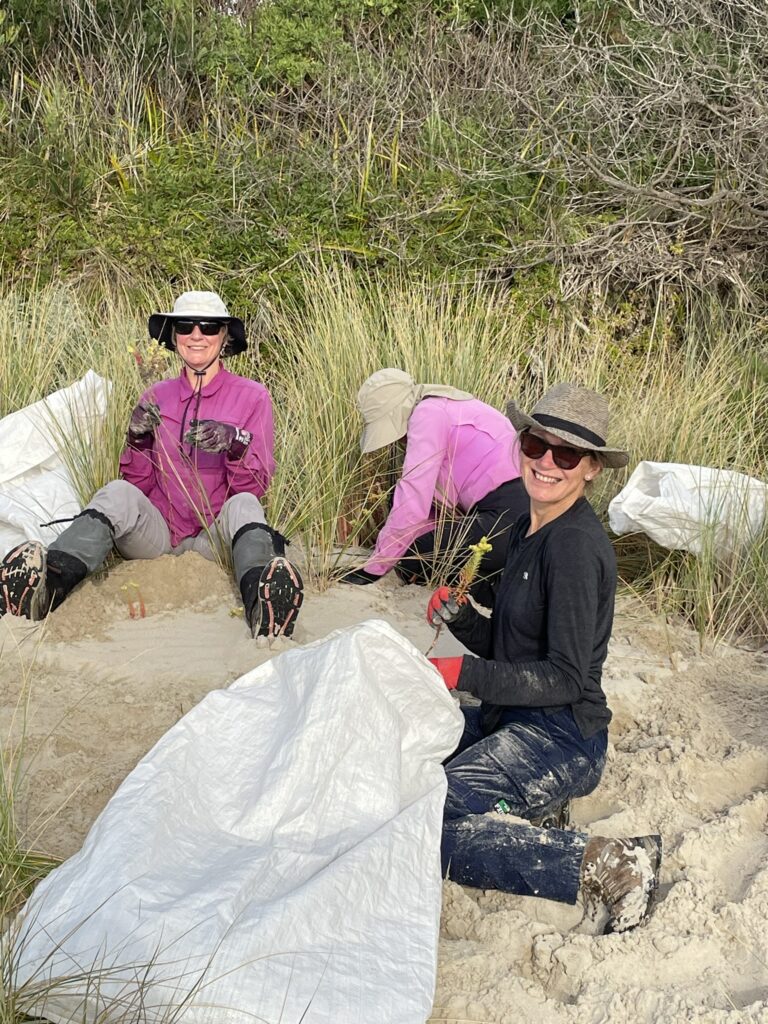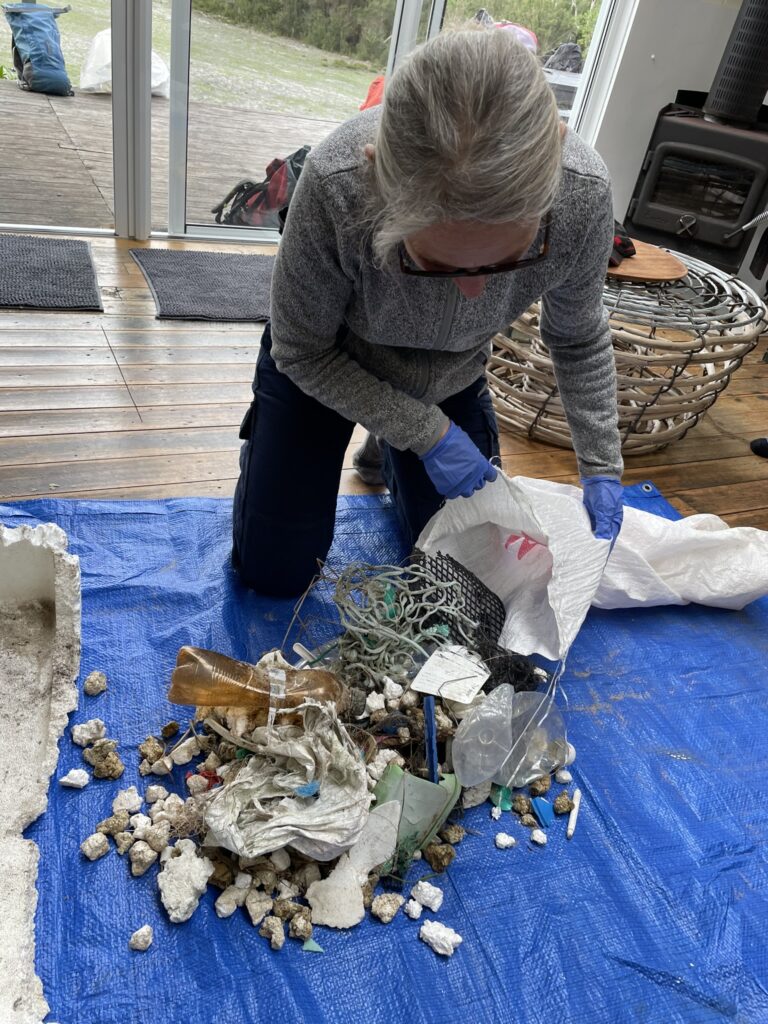Friends of Three Hummock Island (FROTHI) Annual Working Bee Report
Annual Sea Spurge Removal and Marine Rubbish Cleanup Working Bee on Three Hummock Island
All photos by Marina Campbell
- Photo by Marina Campbell
Our Annual Working bee to remove Sea Spurge and marine debris was held on Thursday May 2 – 6, (four nights on Three Hummock Island). This work has been made possible through a Grant from Wildcare’s Tasmanian Nature Conservation Fund.
Planning and Recruitment of Volunteers
This is the fourth year running of this project. Our first three years were funded in collaboration with Cradle Coast Authority (CCA) as part of their Hooded Plover Protection Project on Three Hummock Island, which has since entered its final stages of wrapping up. This year, FROTHI pursued a smaller grant funding opportunity with CCA for $1,500 as well as funding through the TCNF.
The six volunteer spots available were advertised publicly through the Wildcare website and a call out for Expressions of Interest to the Friends of Three Hummock Island membership. Volunteers were selected based on their enthusiasm, experience and willingness to have a go, with first preference given to anyone who applied to previous working bees and were unable to attend. Volunteers were sent a package of information including: Registration form, itinerary, packing list, explanation of project, contact details, etc., and connected via group email chain for further communication. They were also briefed individually by phone.
Pre-departure
Volunteers were advised on two possible transport options (boat or plane), and that transport method would be weather dependent. They were also given general baggage allowance and transportation details for departure. Both transport methods had a maximum capacity of six people with gear. Eventually, the charter boat was selected as the weather conditions were looking favourable and it was a more affordable and accessible option.
Note: Originally, two Team Leaders planned on traveling separately to the island (self-funded) to bring the total number of volunteers to eight, however, they were forced to pull out at the last minute due to having a sick child. One of the six other volunteers (an experienced President of another Wildcare group) took over as Team Leader and the group reduced from eight to six.
On-Island
The charter boat arrived safely late morning on May 2, with six volunteers. Island Caretakers were there to greet the volunteers and settle them into the accommodation. Once settled in, the Team Leader briefed the team in detail and went over the risk assessment for the working bee. Site-specific briefings were also conducted daily.
Generally, volunteers were transported to site at 8:30am for a 9am start. Work was generally completed by 4-5pm, with several breaks in the day, sometimes to move sites. Daylight was an issue due to the time of year.
Each day, Island Caretakers transported volunteers to and from the site. Volunteers then got started with the work of pulling and collecting Sea Spurge before disposing it in large disposal sites behind the dunes that had been GPS mapped and monitored for the past four years.
The Team Leader had access to a map of all Aboriginal Heritage Sites (AHS) located near each field site in order to ensure no AHS were disturbed. All removal works were GPS logged and mapped utilising Mergin Maps. Sea spurge removal methods were informed by research and consultation, particularly with Jon Marsden-Smedley and other members of Wildcare’s Sea spurge Remote Area Action Teams (SPRATS).
Additionally, volunteers walked the length of each beach, collecting all marine rubbish they came across. Marine rubbish was brought back to the accommodation and each individual piece was carefully counted and logged for the Australian Marine Debris Initiative. Marine rubbish was removed from island and disposed of with attention to appropriate recycling.
Lastly, a citizen science bird survey was conducted on each beach to contribute to Birdlife Australia’s Bird database.
Follow up
At the end of the trip, while still on the island, volunteers held focussed reflections and discussions about what did and didn’t work on the trip and provided recommendations for future working bees, which were recorded.
A collation of data was completed in a timely manner following the trip by the Team Leader. This included the number of volunteer hours completed at each site, the number of both mature and immature plants removed, the number and type of each piece of marine rubbish collected, and any site-specific observations and recommendations.
Additionally, feedback was sought from each volunteer participant in the form of an emailed questionnaire.
Total volunteer hours:
- 113.5 actual project hours, working intensively on sea spurge removal and marine rubbish cleanup
- 189 Total Volunteer Hours in the field (including transport to and from island, transport between sites, data collection/recording, briefings, etc.)
- 229 hours total volunteer hours spent on the project this year (including off island planning, coordination, follow up and reporting)
The five day working bee was successfully completed despite the late change in Team Leader, and based on feedback, all participants greatly enjoyed their adventurous remote island experience. Works were carried out safely and effectively, with improved GPS mapping, data collection and methods, including the individual counting of mature and immature Sea Spurge plants removed. Additionally, all marine waste was counted and categorised and inputted into the Australian Marine Debris Initiative as outlined in our funding conditions. We also took the time to conduct bird surveys on each beach to contribute to Birdlife Australia’s Bird Database.
This is an ongoing project with a need for continuous revision and improvement but we are excited to be witnessing a significant reduction in Sea Spurge on the beaches we have been working on each year.
